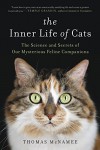Currently Reading






Find me elsewhere:
Should come with several prescriptions / warning labels:

The first caveat, obviously, being "don't ever try this at home." Most of the poisons Harkup discusses are much harder to obtain these days than in Agatha Christie's time, so for most of them the risk of being used as a murder weapon may have been mitigated in the interim, but that's not true for all of them -- belladonna, phosphorus, opiates, ricin, and thallium are still scarily easy to obtain (or distill) if you know how and where, and the story of Graham Young (aka the stepson from hell) is a chilly reminder that (1) it may not actually be a particularly wise idea to present your 11 year old son with a chemistry set for Christmas for being such a diligent student of the subject -- particularly if he has taken a dislike to your new spouse -- and (2) there are still poisons out there, thallium among them, that are but imperfectly understood and may, therefore, be misdiagnosed even today.
My second caveat would be to either read this book only after you've finished all of Agatha Christie's novels and short stories that are discussed here, or at least, let a significantly large enough amount of time go by between reading Harkup's book and Christie's fiction. (Obviously, if you're just reading this one for the chemistry and have no intention of picking up Christie's works at all, the story is a different one.)
There are exactly two instances where Harkup gives a spoiler warning for her discussion of the books by Agatha Christie that she is using as "anchors" for the poisons under discussion (morphine / Sad Cypress and ricin / Partners in Crime: The House of Lurking Death), and in both instances, my feeling is that she is using the spoiler warning chiefly because she is expressly giving away the identity of the murderer.
In truth, however, several other chapters should come with a massive spoiler warning as well; not because Harkup is explicit about the murderer (she isn't), but because she gives away both the final twist and virtually every last detail of the path to its discovery. As Harkup herself acknowledges, a considerable part of Agatha Christie's craft consists in creating elaborate sleights of hand; in misdirecting the reader's attention and in creating intricate red herrings that look damnably convincingly like the real thing. But in several chapters of A Is for Arsenic, Harkup painstakingly unravels these sleights of hand literally down to the very last detail, making the red herrings visible for what they are, and even explaining just how Christie uses these as part of her elaborate window dressing. The effect is the same as seeing a conjurer's trick at extreme slow motion (or having it demonstrated to you step by step) -- it completely takes away the magic. Reading Harkup's book before those by Christie that she discusses in the chapters concerned makes you go into a later read of those mysteries not only knowing exactly what to look for and why, but also what to discard as window dressing -- the combined effect of which in more than one instance also puts you on a direct trail to uncovering the murderer. This applies to the chapters about hemlock (Five Little Pigs, aka Murder in Retrospect -- see my corresponding status update), strychnine (The Mysterious Affair at Styles), thallium (The Pale Horse), and Veronal (Lord Edgware Dies); as well as, arguably, though perhaps to a lesser degree, to the chapter about belladonna (The Labours of Hercules: The Cretan Bull). In fact, in at least one of these chapters
(show spoiler)she as good as discloses both the murderer and the final twist before she's ever gotten to a discussion of the drug used in the first place.
As a result, Harkup's book loses a half star in my rating on this basis alone, and I'm left with one of the odd entries in my library where I'm checking off the "favorite" box for a book that I'm not rating at least four stars or higher. Because the fact is also that I immensely enjoyed Harkup's explanations just how the poisons used in Christie's novels work (and where they occur naturally / what they derive from), which has both increased my already enormous respect for Christie's chemical knowledge and the painstaking way in which she applied that knowledge in her books, and also served as fascinating background reading and a chemistry lesson that is both fun and instructive. I just know that this is one of the books I will come back to again and again in the future, not only when revisiting Christie's catalogue but also when reading other books (mysteries and otherwise) involving poison -- from the beginning of this read, I've had repeated flashbacks to books by other writers (and I'm gratified that Harkup hat-tips at least one of them, Ngaio Marsh's Final Curtain, in her discussion of thallium, even if I'd also have liked at least a little word on the effect of the embalming procedure described Marsh); and I'm fairly certain that particularly my future mystery reads involving poisons will prompt some considerable fact-checking at the hands of A Is for Arsenic.
Which in turn brings us back to caveat No. 1, I suppose ... don't ever try this at home!








 10
10  2
2 